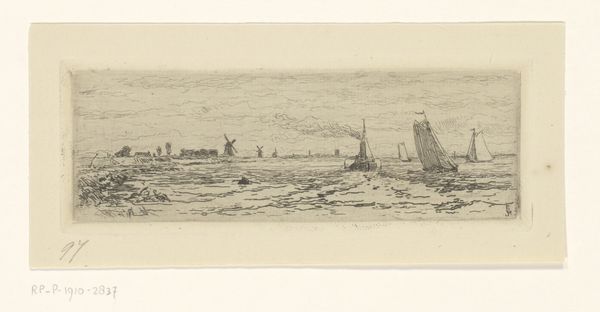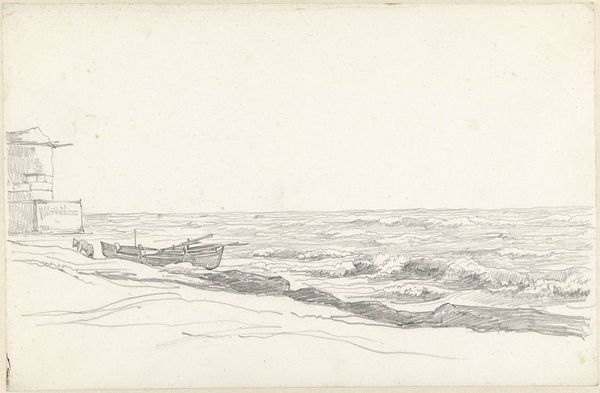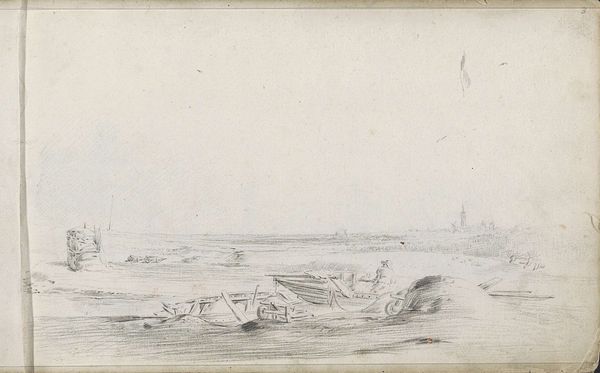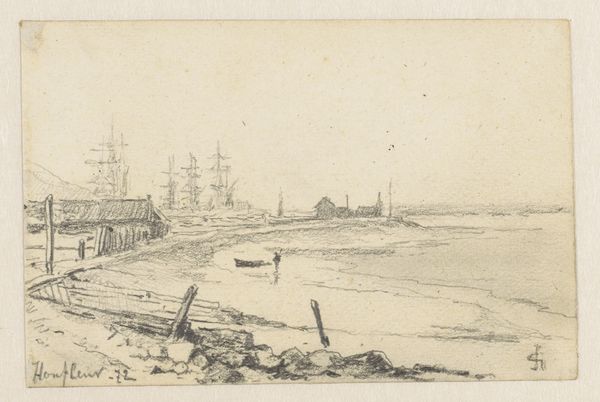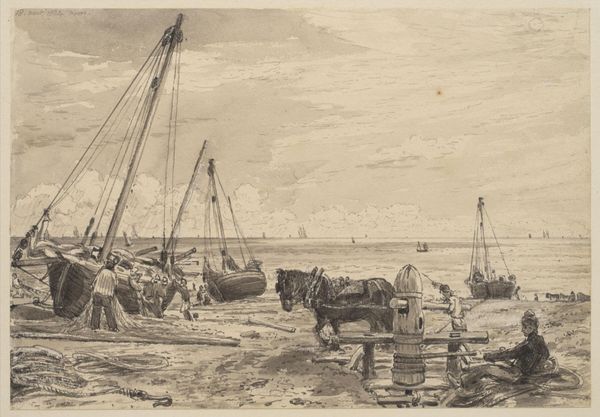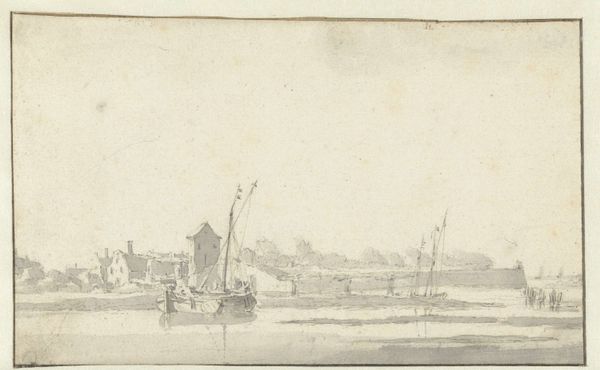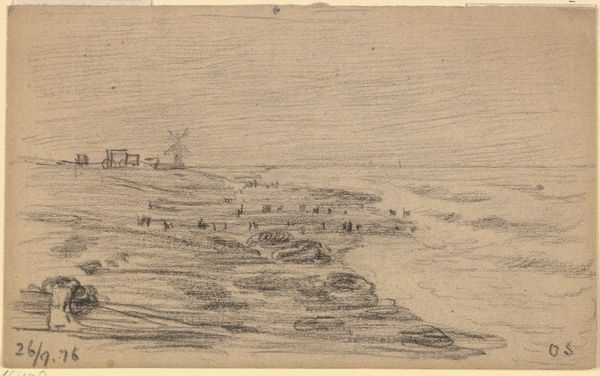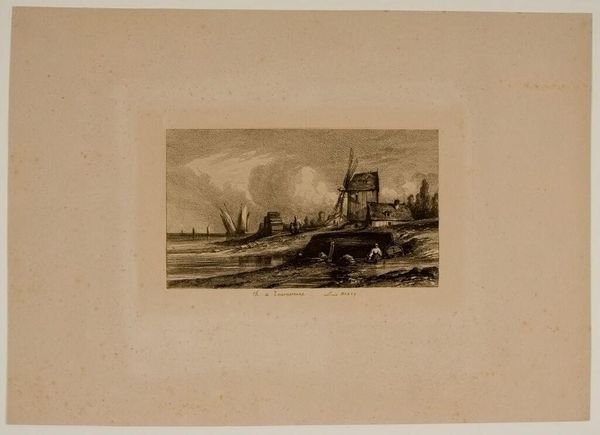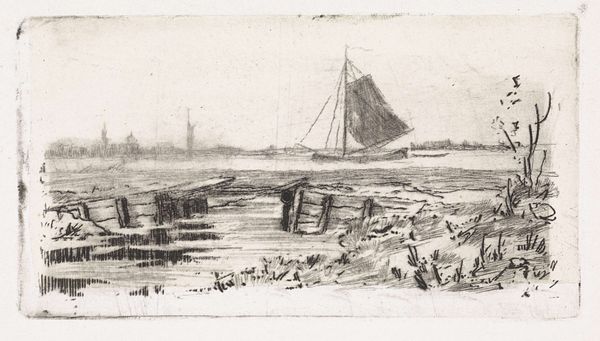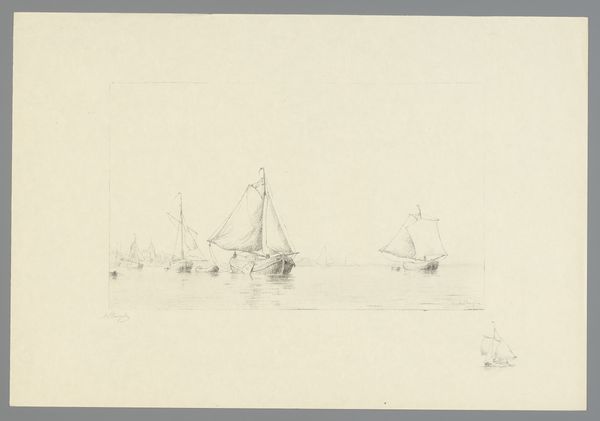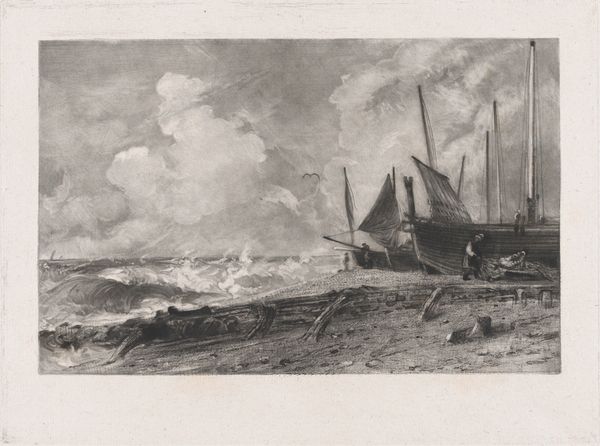
drawing, paper, pencil
#
drawing
#
dutch-golden-age
#
landscape
#
paper
#
pencil
Dimensions: height 251 mm, width 375 mm
Copyright: Rijks Museum: Open Domain
Curator: Welcome. Today we are observing "Coastal View with Palisades," a pencil drawing on paper by Hendrick Jacobsz. Dubbels, created sometime between 1630 and 1676. Editor: My first thought is melancholy. The muted tones, the partially submerged boats, the lone figure wading in the water. It evokes a sense of loss and perhaps a bit of resilience. Curator: Indeed. This piece resonates within a broader understanding of Dutch Golden Age landscapes and seascapes. Dubbels' works often depicted the maritime culture, intrinsically linked to the nation's economic and political power. We have to look at the drawing through the prism of mercantile expansion and colonial ventures. Editor: Absolutely. We must acknowledge that prosperity was built on the backs of enslaved peoples, facilitated by these very ships depicted. But beyond the ships, what's the social context of someone wading knee-deep in the water near broken palisades? What possibilities existed for common people versus merchants and officials in this era? Was this their coastline, too? Curator: Those are crucial questions. Consider, for example, how these structures might point to land ownership and usage along the coasts. Did certain policies regarding access to waterways and shorelines directly impact people's ways of living or generating income? These become visible if we consider the role and visibility of marginalised or less privileged inhabitants along waterways at that time. Editor: Precisely! What did these coasts *mean* to different populations? Looking at it with an eye towards accessibility—physical access, yes, but also considering visual representation: Whose perspective are we seeing here? What isn’t being shown? Curator: Well, these historical artworks provide crucial lenses for investigating those inequalities through social analysis and critical contextualization. We gain insight from questioning its historical narratives. Editor: Ultimately, this humble drawing provokes layered dialogues. It's a beautiful reminder that the visual arts reflect our shared, often complex histories, and beckons to be viewed by audiences with a critical viewpoint.
Comments
No comments
Be the first to comment and join the conversation on the ultimate creative platform.
